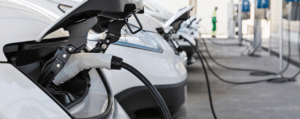
The compelling reasons why electric vehicles are a smarter choice
Electric vehicles (EVs) are becoming increasingly popular in Australia. Find out why a Flare electric vehicle could be a smart

Elevate your talent attraction and retention with free employee benefits. Uncover a platform that effortlessly entices, engages, and retains your valuable staff.
Get a free demoSee how leading healthcare organisation Healius turned turnover into triumph with Flare.
Read Healius’ storyDevelop your business skills and HR expertise with the Flare Benefits Resource Hub. Get access to helpful tools, articles, guides, webinars, and other on-demand resources that can help your business attract, hire, and retain top talent.
Explore insights from our comprehensive survey of 1500+ Australian workers across a variety of industries, revealing the benefits that genuinely make an impact.
Still haven't found what you're looking for? We're here to help.
Get in touch
Electric vehicles (EVs) are becoming increasingly popular in Australia. Find out why a Flare electric vehicle could be a smart